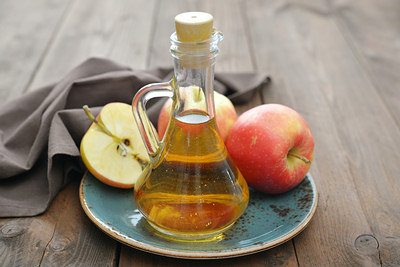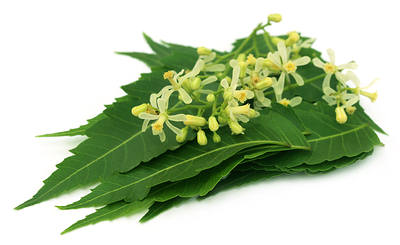Apart from age, other risk factors for cervical spondylosis include occupations that may cause more stress on your neck, certain neck injuries, incorrect posture while sitting or walking, smoking, being overweight, a sedentary lifestyle and genetic factors.
Cervical spondylosis does not cause noticeable symptoms for most people. However, some may experience neck pain, mild and chronic pain around the shoulder blades, stiffness in the neck, muscle weakness, headaches, pain along the arms and in the fingers, and a tingling sensation on the shoulders and arms. At times, one may also have symptoms like loss of balance.

Here are the top 10 home remedies for cervical spondylosis.
1. Regular Exercise
One of the major causes of cervical spondylosis is lack of regular exercise. Therefore, you can reduce pain and stiffness around your neck and shoulders by incorporating regular physical exercise into your lifestyle.- Rotate your head in both clockwise and counter-clockwise directions, and nod the neck side to side from one shoulder to the other. Do this for 10 minutes 2 or 3 times daily. This will help the pain in your neck from getting severe.
- You can even rotate your arms in clockwise and counter-clockwise directions, and fold and unfold your fists at regular intervals to control pain.
- Also, do low-impact aerobic exercises like swimming or brisk walking for 30 minutes at least 5 times a week.
- You can also enjoy cycling on a regular basis. However, make sure to keep your back straight while cycling.
2. Hot and Cold Compresses
Another easy way to deal with neck pain due to cervical spondylosis is alternating hot and cold compresses on the affected area. Hot compresses will improve blood circulation and relax sore muscles. Cold compresses will reduce swelling and inflammation.- To make the hot compress, wrap a hot water bag in a thin towel.
- To make the cold compress, wrap a few ice cubes in a thin towel.
- Place the hot compress on the affected area for 2 to 3 minutes.
- Remove it and apply the cold compress for 1 minute.
- Repeat the process for 15 to 20 minutes.
- Follow this simple remedy a few times daily until you get relief.
3. Epsom Salt Bath
Taking an Epsom salt bath on a regular basis is another good remedy to ease symptoms related to cervical spondylosis. The magnesium in Epsom salt regulates the pH levels in the body, in turn reducing stiffness, inflammation and pain in the neck and shoulders.- Mix a little water in 1 to 2 tablespoons of Epsom salt to make a thick paste. Apply it on the affected area for 15 to 20 minutes to get soothing comfort. Do this every other day.
- Alternatively, add 2 cups of Epsom salt to a warm bath. Soak in it for 15 to 20 minutes. Enjoy this relaxing bath 2 or 3 times a week.
4. Garlic
Garlic gives good results when it comes to cervical spondylosis symptoms. Its anti-inflammatory and analgesic properties help treat pain, swelling and inflammation in the neck and surrounding areas.- Eat a couple of raw garlic buds on an empty stomach each morning with water. You can also take garlic capsules but only after consulting your doctor.
- Another option is to heat 2 to 3 crushed garlic cloves in a pan with some vegetable oil. Allow it to cool, then use it to massage the painful area for 5 to 10 minutes. Follow this with a warm bath. Do this 2 times daily.
5. Turmeric
Due to its anti-inflammatory properties, turmeric is another popular remedy for cervical spondylosis. In addition, turmeric increases blood circulation, which helps reduce muscle stiffness and pain.- Mix 1 teaspoon of turmeric powder in a glass of milk. Heat it on low heat for 5 minutes. Allow it to cool, then add a little honey. Drink it 2 times daily.
- Alternatively, take turmeric capsules 3 times daily. Consult your doctor for the correct dosage.
6. Sesame Seeds
One popular Ayurvedic remedy to deal with cervical spondylosis is sesame seeds. They are rich in calcium, magnesium, manganese, copper, zinc, phosphorus and vitamins K and D, which are good for your bones and overall health. Sesame oil is also effective in reducing neck pain.- Apply some warm sesame oil on the affected area and massage for 10 minutes. Then apply a hot compress on the area. Do this 3 or 4 times daily.
- You can also mix a few drops of lavender oil in warm sesame oil and use it to massage the neck area.
- Other options are to chew 1 tablespoon of roasted white sesame seeds once daily in the morning, or mix 1 teaspoon of roasted and ground sesame seeds in a glass of warm milk and drink it 2 times daily. Also, include sesame seeds in your cooking.
7. Ginger

Ginger is another widely used home remedy to treat cervical spondylosis. This herb is rich in anti-inflammatory properties and improves blood circulation. Thus, it helps reduce pain and inflammation in the neck and surrounding areas.
- Drink ginger tea 3 times a day. To make the tea, boil 1 tablespoon of thinly sliced ginger in 2 cups of water for 10 minutes. Strain, add honey and drink it.
- Alternatively, make a powdered preparation using equal amounts of dried ginger root, celery seeds and cumin seeds. Add rock salt to improve the taste. Eat 1 teaspoon of this powder with water before going to bed.
- You can also massage the affected area with ginger oil a few times daily.
8. Apple Cider Vinegar

Sponsored links
- Place a paper towel soaked in apple cider vinegar over the affected area. Leave it on for a few hours. Do this 2 times daily.
- Another option is to add 2 cups of apple cider vinegar to lukewarm bath water. Soak in it for 10 to 15 minutes, once daily.
- You can also add 1 tablespoon of raw and organic apple cider vinegar and a little honey to a glass of water and drink it once daily.
9. Cayenne Pepper

Another effective home remedy for cervical spondylosis is cayenne pepper. It contains capsaicin, which has analgesic as well as anti-inflammatory properties that help reduce pain and inflammation in the neck.
- Mix together 1 teaspoon of cayenne pepper powder and 2 tablespoons of lukewarm olive oil. Apply it on the affected area. Cover it with a bandage and leave it on for a few hours or overnight. Do this daily.
- Alternatively, add 1 teaspoon of cayenne pepper powder to a glass of warm water. Drink it 2 or3 times daily.
10. Indian Lilac

Sponsored links
- Add a little water to 1 tablespoon of neem powder to make a thick paste. Heat the paste on a double boiler for a few minutes. Apply this hot paste (it must be bearable) on the affected areas. Leave it on for 30 minutes, then rinse it off with warm water. Repeat a few times daily.
- Another option is to boil some neem leaves and flowers in 1 cup of water. Strain, allow it to cool and drink it twice daily.
- You can also massage the affected area with neem oil 2 times a day.
Additional Tips
- Eating a little Chebulic myrobalan (haritaki) after lunch and dinner will also provide quick relief from pain and stiffness.
- Avoid physical exertion. Do not do anything that can worsen the problem, such as heavy lifting.
- Get a good night’s sleep. Sleep on one firm pillow to reduce strain on your neck; do not use several pillows. Sleep on a firm mattress, on your back or on your side with knees bent at right angles to the torso.
- Maintain correct posture when standing and sitting.
- Eat plenty of salad made with raw vegetables like tomatoes, carrots, cabbage, cucumbers, radishes and lettuce.
- Avoid fatty, spicy and fried foods, sour curd, sweets, sugar and coffee.
- Give up smoking and tobacco in any other form.
- Eat foods high in protein, vitamin C, calcium and phosphorous.
- Wear a soft neck brace or collar for short durations to get temporary relief. Do not wear it for long periods.
- Expose the affected area to early morning sunrays for 10 to 15 minutes daily.
